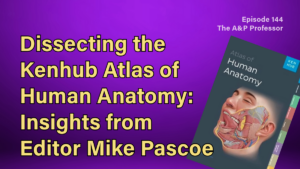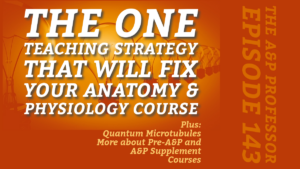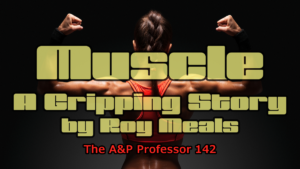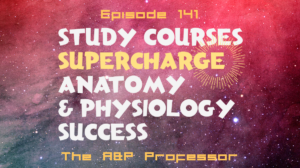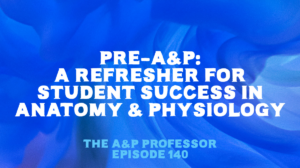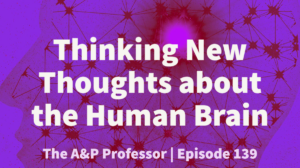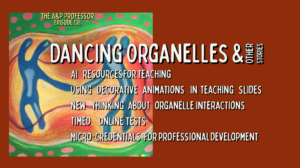Mike Pascoe joins host Kevin Patton in Episode 144 to chat about Mike's experience in editing the new Kenhub Atlas of Human Anatomy. We go behind the scenes to see how this new kind of anatomy atlas was developed. Let's see how those decisions get made and how the learning perspective gets incorporated into anatomy manuals. And we explore diverse representation in anatomy images and why we won't find any eponyms in this atlas. We also have a brief remembrance of our friend David Allard.
00:00 | Introduction
00:45 | Remembering David Allard
04:25 | Introducing Mike Pascoe
06:12 | A New Take on the Human Atlas
19:00 | Debriefing and Predictions Ahead
19:55 | Creating Books
34:25 | Your New Thing
35:44 | More Features of the New Atlas
47:27 | Staying Connected
★ If you cannot see or activate the audio player, go to: theAPprofessor.org/podcast-episode-144.html
🏅 Apply for your credential (badge/certificate) for listening to this episode: theAPprofessor.org/podcast-episode-144.html/#badge
⭐⭐⭐⭐ Please rate & review this podcast so that others can decide whether to give it a try: RateThisPodcast.com/theAPprofessor
❓ Please take the anonymous survey: theAPprofessor.org/survey
☝️ Questions & Feedback: 1-833-LION-DEN (1-833-546-6336)
✔️ Follow The A&P Professor on Twitter, Facebook, Blogger, Substack, Tumblr, or Instagram! @theAPprofessor
📰 Get the once-or-twice-weekly TAPP Science & Education Updates theAPprofessor.org/updates
The light of the heart is hidden in a drop of blood. (Rumi)
Remembering David Allard
3.5 minutes
In this segment, Kevin reflects on the recent passing of a friend and colleague, David Allard of Texas A&M University-Texarkana, who was an exceptional educator and human being. Kevin finds inspiration from David's generosity and commitment to his students and peers.
★ Muscle: A Gripping Story by Roy Meals | TAPP 142 (mentioned in this segment)
★ The One Teaching Strategy That Will Fix Your Anatomy & Physiology Course | TAPP 143 (where I talk about generosity in teaching)
★ Longtime Texarkana College and Texas A&M University-Texarkana biology professor David Allard dies (from Texarkana Gazette) AandP.info/qll
★ Dr David Allard Memorial Service 11-30-23 youtu.be/Gi2ZunUtMxk
★ Two new species of sand-burrowing amphipods of the genus Haustorius Müller, 1775 (Amphipoda: Haustoriidae) from the northwestern Gulf of Mexico (journal article in Zootaxa by David Allard's former student Zachary Hancock, who named one of the new species after David [Haustorius allardi]) AandP.info/rzp
★ Dr. David & Ellen Allard Endowment Scholarship (in case you want to make a donation in David's memory) tamut.edu/give/index.html
Please rate & review The A&P Professor—it helps others decide whether to give us a try! 😁
★ RateThisPodcast.com/theAPprofessor
Introducing Mike Pascoe
2 minutes
In this segment, we introduce the guest for the episode, Mike Pascoe, who is an associate professor of anatomy at the University of Colorado Anschutz Medical Campus. Mike is involved in developing and delivering anatomy curricula to various student groups and has a research interest in innovative learning approaches. He's the editor of a new learning resource, the Kenhub Atlas of Human Anatomy.
★ Here is a single link with everything about the new atlas in it: linktr.ee/kenhubatlas
★ Additional links:
★ ★ www.kenhub.com/en/atlas-of-human-anatomy
★ ★ www.goodreads.com/book/show/200471864
★ The A&P Professor Book Club (our own recommendation of the new atlas) theAPprofessor.org/kenhub-atlas
A New Take on the Human Atlas
13 minutes
Editor Mike Pascoe describes his new Kenhub Atlas of Human Anatomy. First, we look at the relationship of the innovative, disruptive Kenhub website and this new print manual. Mike mentions how Kenhub often ranks high in web searches and how they aim to make their atlas concise and lead readers to a larger library of materials using QR code scanning. The convenience and accessibility of QR codes, easily scanned with smartphones, and the pocket-sized form factor of the atlas, making it easy to carry around in a lab setting.
Debriefing and Predictions Ahead
1 minute
Coming soon will be our annual debriefing episode that features predictions for anatomy and physiology teaching in the coming year ahead. What are your predictions or concerns for the next year? What are you excited about? Why not share your thoughts?
Share it with us on the podcast hotline!
1-833-LION-DEN
1-833-546-6336
Or send an email to podcast@theAPprofessor.org
★ Review a Year. Preview a Year. | Debriefing & Predictions | TAPP 132
Creating Books
14.5 minutes
In this segment, we shift the conversations toward the process of creating a textbook or atlas and the many design considerations that happen behind the scenes. We discuss inclusion and diversity in both art representation and in anatomic terminology.
★ Weight Stigma! The Difficult Cadaver | Journal Club Episode | TAPP 93 (an episode where Krista Rompolski discusses weight bias)
★ Preview of Kenhub atlas linktr.ee/kenhubatlas
★ The Eponym Episode | Using Modern Terminology | Episode 40
★ More on Eponyms in A&P Terminology | Episode 41
★ NOMENs land: The place of eponyms in the anatomy classroom (article from Anatomical Science Education) AandP.info/36s
Your New Thing
1.5 minutes
Do you have book or article or project that you want to share with other anatomy and physiology faculty? Or maybe your experience trying new things in your course? Or an interesting story or experience? Here's your forum for doing that! Contact me if you want to be part of this podcast!
1-833-LION-DEN
1-833-546-6336
Or send an email to podcast@theAPprofessor.org
Using the New Atlas
11.5 minutes
Mike Pascoe rounds out the discussion of his Kenhub Atlas of Human Anatomy by listing some of its essential features and the things that make it a unique resource for the study of human anatomy.
People
Production: Aileen Park (announcer), Andrés Rodriguez (theme composer, recording artist), Karen Turner (Executive Editor), Kevin Patton (writer, editor, producer, host).
Not People
Robotic (AI) audio leveling/processing and transcription is done by Auphonic.com and Rev.com and the content, spelling, grammar, style, etc., of these episode notes are assisted by various bots, such as Grammarly and QuillBot.
If the hyperlinks here are not active, go to TAPPradio.org to find the episode page.
★ More details at the episode page: theAPprofessor.org/podcast-episode-144.html
★ Transcript available in the transcript box: theAPprofessor.org/podcast-episode-144.html
★ Need help accessing resources locked behind a paywall? Check out this advice from Episode 32 to get what you need! my-ap.us/paywall
Take The A&P Professor experience to the next level!
★ theAPprofessor.org/community
Earn cash by referring other A&P faculty to this podcast:
Tools & Resources
★ TAPP Science & Education Updates: theAPprofessor.org/updates
Follow The A&P Professor on Twitter, Facebook, Mastodon, Reddit, TikTok,LinkedIn, Blogger, Substack, Tumblr, or Instagram @theAPprofessor
The A&P Professor® and Lion Den® are registered trademarks of Lion Den Inc. (Kevin Patton)
Click here to listen to this episode—or access the detailed notes and transcript.

